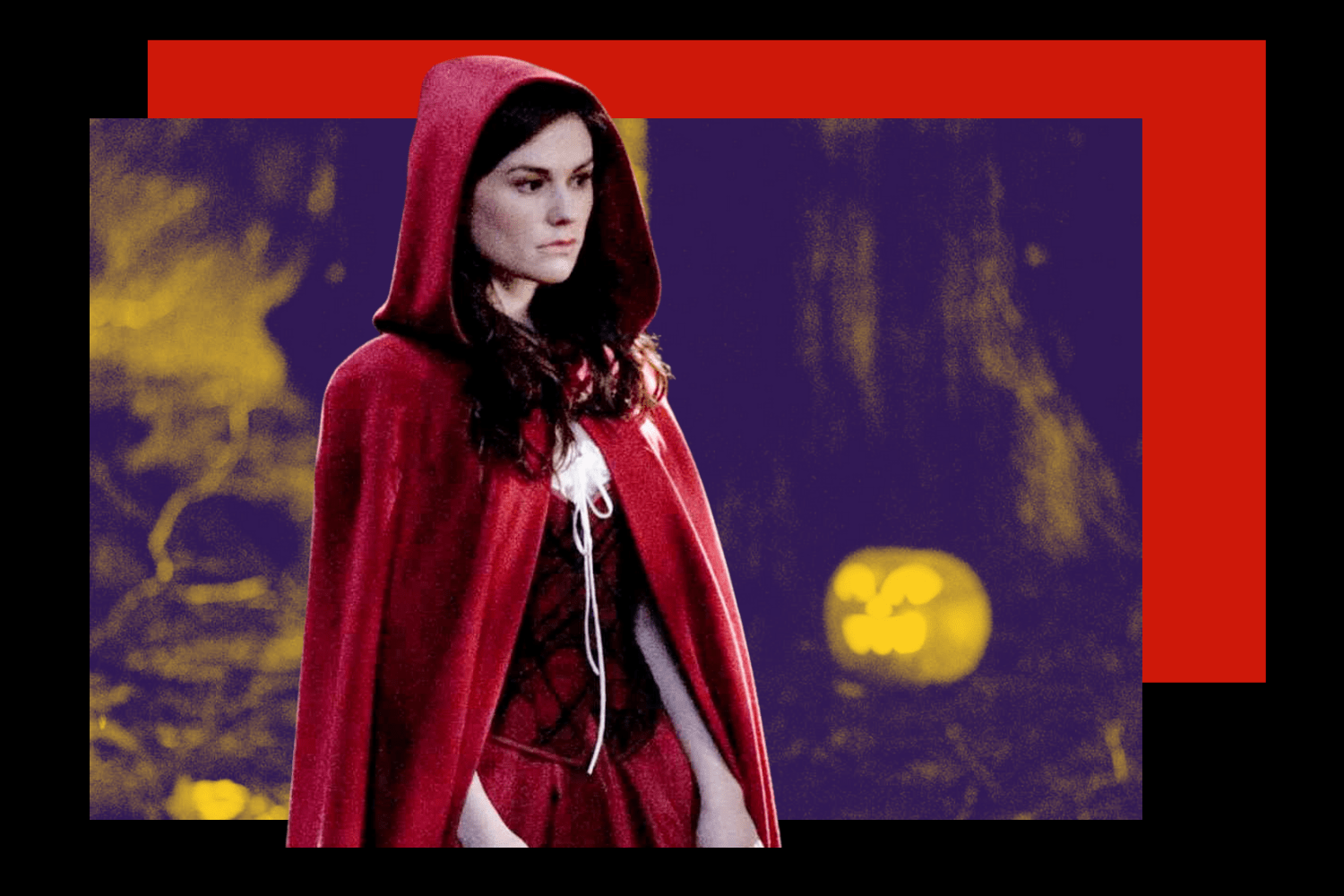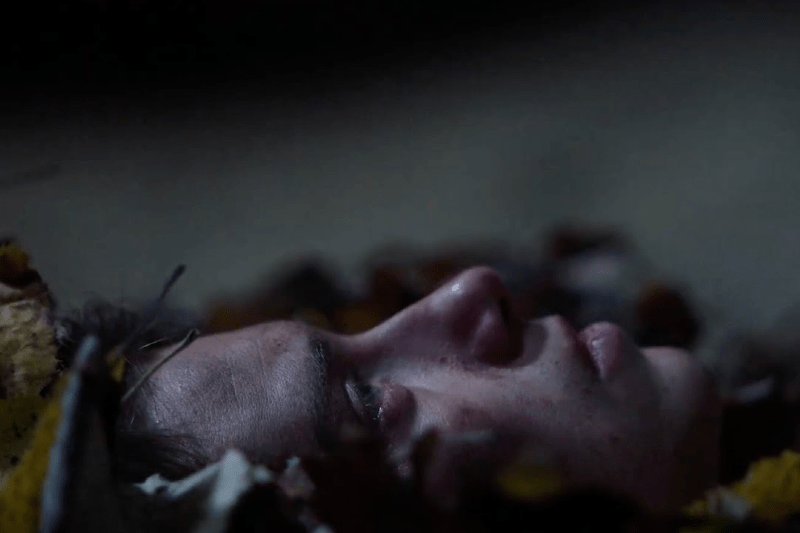Uterus Horror
Sex, Teeth, and ‘Trick ‘r Treat’
October 15th, 2021 | By Molly Henery

In a genre typically considered “for the guys,” it’s time to give a nod to the ladies. Uterus Horror is a subgenre of horror films that focuses on the uniquely female experience of puberty and the act of coming into your sexuality, using horror elements to emphasize and/or act as a metaphor for that experience. These films are often ignored in theaters but quickly develop cult followings. Columnist Molly Henery, who named and defined the subgenre, tackles a new film each month and analyzes how it fits into this bloody new corner of horror.
Happy Halloween, creeps! It’s finally the most wonderful time of the year, and the perfect excuse to talk about a Halloween favorite. The film is 2007’s seasonal must-watch Trick ‘r Treat! Written and directed by Michael Dougherty (Krampus, Godzilla vs. Kong), Trick ‘r Treat weaves together different tales of horror all taking place in the same town on Halloween night. There’s a school principal who has sinister extracurricular hobbies, a group of pranksters who learn that some local legends are all too real, and an old curmudgeon who finds out what happens when you don’t give out treats on Halloween. All the while, Sam, the embodiment of Halloween, roams the streets looking for those who try to break the rules.
Among all the different interwoven plots is the story of Laurie (Anna Paquin). When we first meet Laurie, she is with her sister and two other friends. The group is trying on costumes at a Halloween shop on All Hallow’s Eve. When they come out of the dressing rooms, the other women are wearing sexy Disney princess costumes—Laurie is wearing a classic Little Red Riding Hood costume. She complains about the outfit making her look like a kid, but her sister reminds her that the costume is tradition.
The other women pick up random guys to be their dates to a special party. Laurie is left to wander the streets amidst the Halloween parades and celebrations to find her own date. Unbeknownst to her, Laurie is being stalked by a predator. A hooded killer, dressed as a vampire, follows Laurie as she makes her way into the woods en route to the party.
As we see the clearing filled with women partying in Halloween costumes, a body falls from the trees wearing Laurie’s red riding hood. When the body is flipped over, we learn it’s not only the killer, but the principal from a prior segment. Laurie finally makes her appearance at the party, now that her “date” has arrived. It’s at this point that the camera pans through the party to reveal all the women’s dates are dead. The women rip off their human skin to reveal they are werewolves underneath.
Laurie approaches her “date” as she starts to transform. She makes a delightful Big Bad Wolf joke while also talking to her victim, telling him this is her first time. Finally, she devours her would-be killer.
Trick ‘r Treat takes a different approach compared to films like Ginger Snaps and When Animals Dream. Those films use lycanthropy as a metaphor for the changes young women experience as they go through puberty. Dougherty chooses to focus on the stereotypes that surround a woman losing her virginity.
In the first scene with Laurie, she talks about wanting her first time to be “special.” Because the audience doesn’t know the truth yet, we assume the first time she’s referring to is her first time having sex. In reality, Laurie is talking about the first time she is going to kill and eat someone.
There is an interesting ritualistic element leading up to Laurie’s first kill that adds to the coming-of-age feel. Dougherty establishes that these lycan women have a tradition of wearing a Little Red Riding Hood outfit when it’s time for them to carry out their first kill. This is perfect—depending on which version of the story you’re reading, Little Red Riding Hood is just a little girl who falls prey to a vicious wolf and ultimately must be saved by a big, strong woodsman.
This costume choice creates the illusion that Laurie is a sweet, innocent young woman for the audience, as well as the other characters. It’s no wonder a murderous serial killer would see Laurie, all alone and dressed up in a borderline infantile costume, and perceive her as the perfect victim. Too bad for the killer; he’s just falling right into a trap.
This set up makes the moment Laurie is revealed as the true Big Bad Wolf incredibly satisfying. It flips the script on the idea of women inherently being innocent little victims and allows for the werewolf women to take back their power. They are the ones on the prowl, they are the ones in control, and they are the ones who will devour you. It also challenges the way women in horror are portrayed. Laurie seems like she would be the perfect virginal final girl, and even has the name of a famous final girl. Instead, she’s the thing men should be fearful of.
Trick ‘r Treat also puts the power back in a woman’s hands when it comes to the idea of losing virginity. Nothing is “lost” by having sex for the first time; this outdated concept is often forced on young women to teach them they must remain a virgin until marriage or else they are “less than” for their husband. That’s one of the reasons why Dougherty’s work in this film fits so well into Uterus Horror. He uses tearing into flesh and eating people as a metaphor for sex, but instead of women going through all that pain and gore, it’s the men who are subjected to it.
Horror is one of the few genres that allows filmmakers to project concepts commonly reserved for women onto men. Men are often the aggressors and will attack women, but in Trick ‘r Treat the lycanthropic women take on that role. Women are the ones subjected to pain during their “first time,” but Dougherty makes sure it’s the men who felt that pain in his film. Even in horror, men are the ones typically shown brutally killing women — Laurie and her pack are the counterbalance. Not only is Trick ‘r Treat one of the greatest Halloween-themed horror films of all time, but it also is a chew-’em-up, spit-’em-out new entry into the Uterus Horror subgenre.
Visit our Editorials page for more articles like this. Ready to support more original horror criticism? Join the Certified Forgotten Patreon community today.



